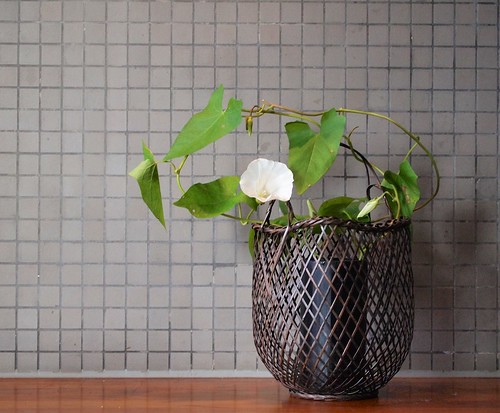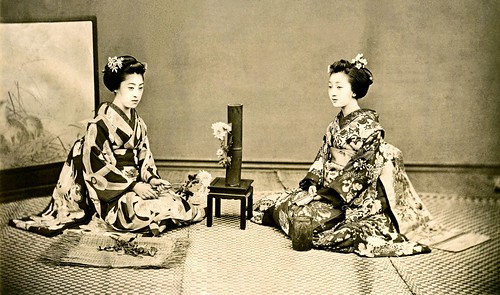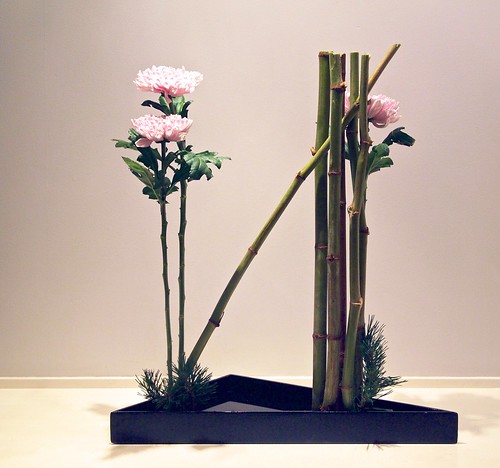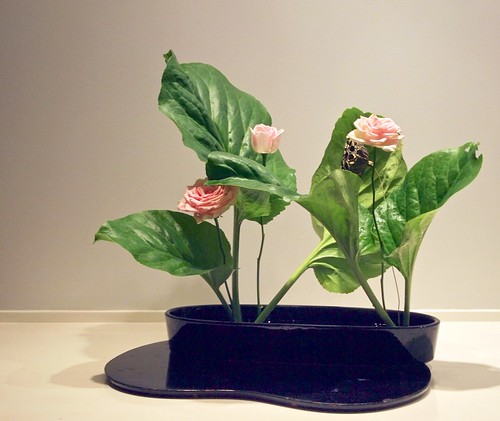One of the ikebana practitioners that I have come in contact with by writing this blog is Kathleen Adair, Junior Executive Master of the Ichiyo School in Tokyo. Through our exchange of e-mails Kathleen has also become a dear friend and I've been looking for an opportunity to meet her 'in real life'. A couple of weeks ago it finally happened. Sensei Kathleen Adair has been on a tour in Europe and visited Stockholm, Sweden, for a program with demonstrations and workshops hosted by Judit Katkits of First leaf ikebana, Ichiyo ikebana in Stockholm.
The program lasted from Saturday to Sunday and there was a demonstration and a workshop each day, the first one held at The Museum of Ethnography and the second at The Museum of Far Eastern Antiquities. In this blog post I want to give you a glimpse of the first demonstration, with the theme Light and darkness.
The demonstration started off with a cooling arrangement in a tall glass vase. Kathleen reminded us that when using a see-through vase for ikebana, one is always arranging the water just as much as one is arranging the flowers. To make an appealing and interesting arrangement there must always be a relation between the plant materials and the container.
The demonstration started off with a cooling arrangement in a tall glass vase. Kathleen reminded us that when using a see-through vase for ikebana, one is always arranging the water just as much as one is arranging the flowers. To make an appealing and interesting arrangement there must always be a relation between the plant materials and the container.
While the first arrangement was 'the last summer arrangement for the season', the second was a traditional autumn arrangement: A moon viewing arrangement with Chrysanthemum, using a loosely woven basket as a flower holder in the shallow container. A specially made Japanese round fan, uchiwa, representing the moon, is attached to a bamboo vase in this arrangement consisting of two parts.
The next arrangement was about making something modern with a very traditional old container, in this case a large bamboo vase made for formal traditional ikebana. By using light and fresh materials and using a plastic covered metal vaier instead of vines, the arrangement got a new and modern feeling to it.
Creating structures of branches to hold the other materials is one of the specialities of the Ichyo school. In this arrangement Mitsumata branches are used stacked on top of each other, as a fixture for the flowers. The arrangement is also lifted up on a plexiglass holder to ad space around the arrangement and create a less heavy impression.
For the last arrangement leftover flowers were used in an arrangement meant to lighten up the dark autumn and winter nights of Sweden. LED lights were placed in a base and glass bowls placed on top of them, so that the plant materials where lit up from beneath.
Judith Katkits, representing the Ichiyo school in Sweden, introduced sensei Kathleen Adair and her assistant.





























